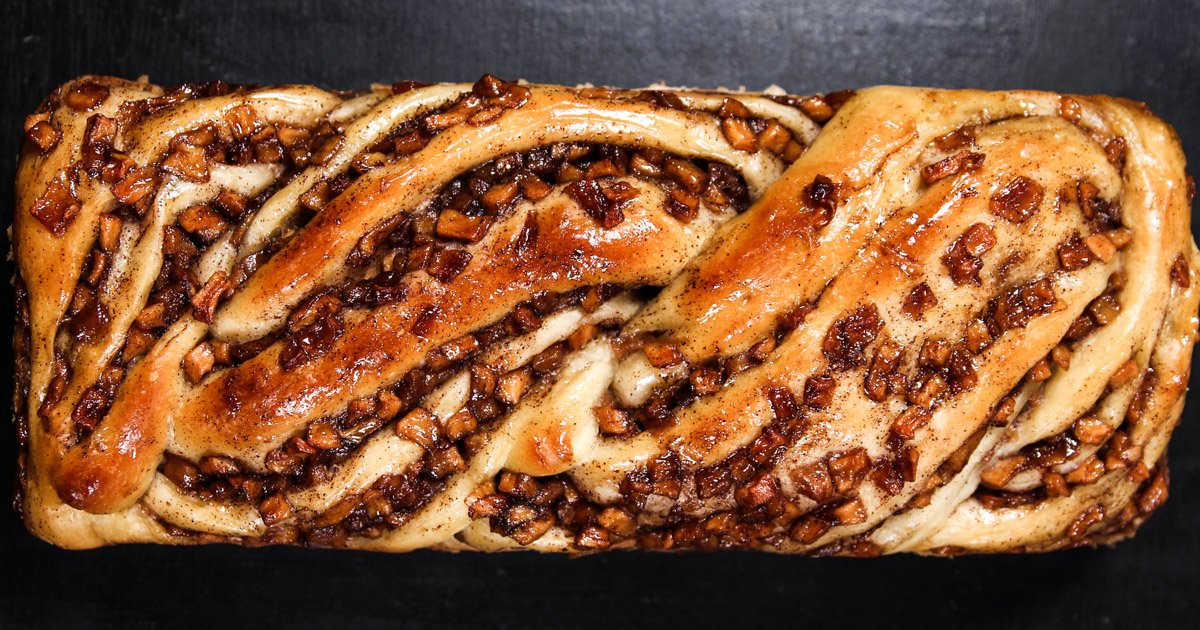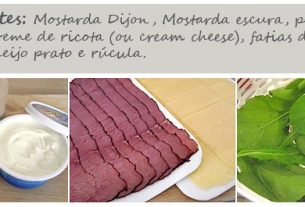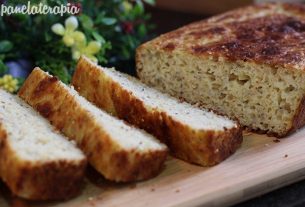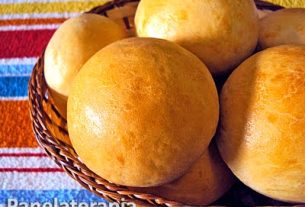The success of The Fofo was great and I decided to turn the recipe into a vegan option to reach more people: cuteness must be propagated!
In case you don’t understand anything: The Fofo is my super, super, super cute milk bread that uses an amazing method called Tangzhong or Yukone.
It is an easy and super quiet bread to do that gives a result that you get: but it is not possible. Yes it is! The bread is so tasty, but so tasty that it does not need anything, you can eat pure of everything. I think, at least.
And of course, his softness… too amazing. It looks like a memory foam: you can knead that it goes back to its original format. My quota of huselded bread has already given, I no longer want to hurt the roof of the mouth… hahahahah.
For those and others I decided to veganize the original recipe… which technically wouldn’t be that difficult. I mean, I had to find solutions to get around the absence of egg and milk. But I believe I was successful, after all, I am posting the recipe.
Milk by Water
Because I was vegan, I couldn’t use cow’s milk, right. The most obvious choice is water for simple reasons.
- It is easier to find, technically, in every house has ;
- It doesn’t cost that much.
- It is not a mixture with other substances that can alter the texture of the bread.
Because of the latter that I did not choose vegetable drinks, the vast majority is a mixture of ingredients (except for some options made at home and/or faces). In time: nothing, nothing, nothing wrong has this mixture. After all, everything is chemical.
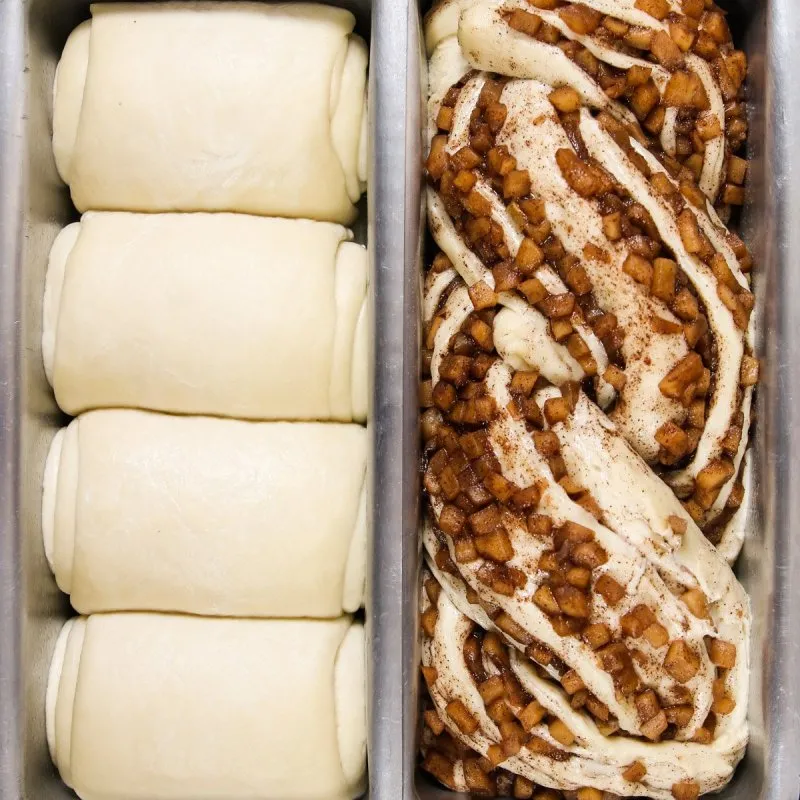
The detail is that there are substances that change behavior when being heated (usually thickeners), can become more consistent (increases viscosity) that can influence the final result of the bread. That is, it is another variable to worry about.
It wouldn’t be so much a problem if all vegetable drinks were the same, but they’re not. Each type, each brand has its own specific formulation. Then it would be necessary to make the recipe with each of them. Without wanting to say the obvious: we don’t have the time or money for it.
So I did it with water.
Flour with more protein or not
What increased the tests of the vegan version was precisely the flour. For me, I was getting softer than ideal. The original mass is softer than usual (because it is a well-hydrated mass), but not so soft.
To be sure what I was looking at (in my own) that testing the same recipe with flours of 10%, 12% and 14% of total proteins.
I will not kill you with boredom, the summary of the opera is as follows: you can use any flour with some changes in technique.
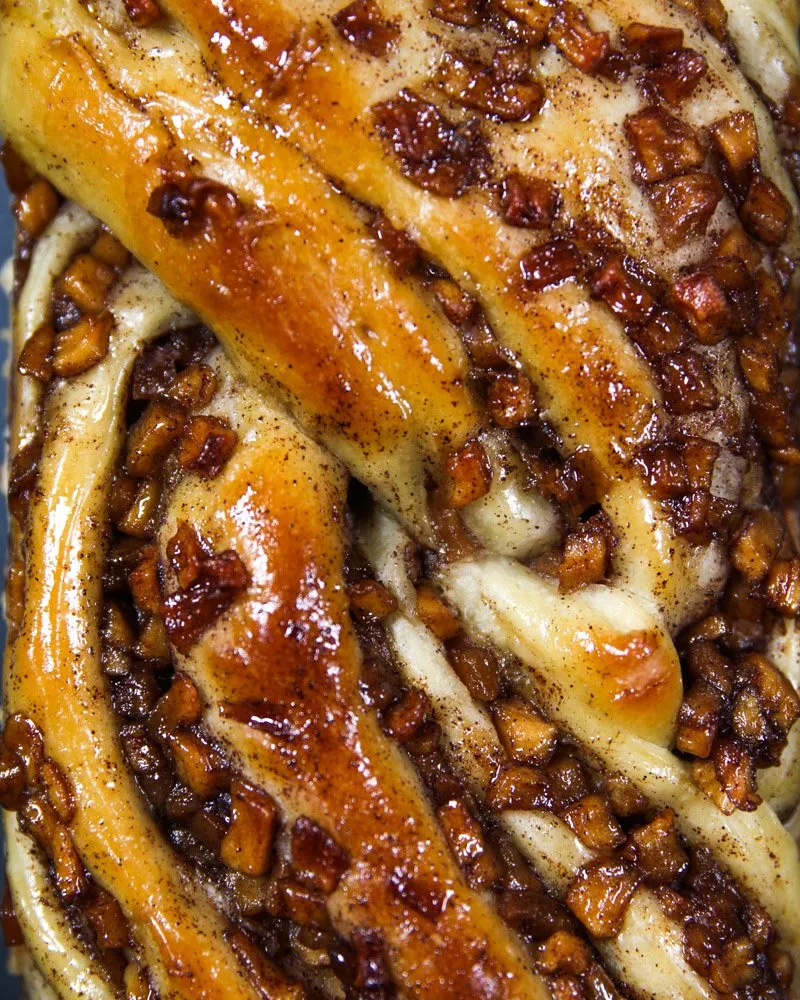
In the recipe below there is a step in the refrigerator of at least 45 minutes (you can be more if you want): putting in the refrigerator helps the pasta to stay firmer, and you can work the dough more easily. For flours of 12-14% is made a moisture adjustment because they have more protein.
So don’t skip the refrigerator stage!
Type of organic yeast
In general, any type of organic yeast can be used: dry or fresh. By choice and ease, I use instant dry in virtually all fermented pasta.
During the tests in my kitchen I realized the following: there are differences when I used the yeast from Fleischmann and Dr. – Oetker.
- Fleischmann: the pattern that everyone has used, function as expected. Fermentation is more controlled on hot days, but on cold days (below 20oC) it takes longer.
- Doctor. Oetker: has a “stronger” fermentation and in the heat it gets a little more uncontrolled, but on cold days (or in the refrigerator) it becomes more controlled.
Opera summary: you can use either of the two, but if the day is colder or will let the dough rest longer in the refrigerator recommend that you use Dr. – Oetker.
Differences from the original and vegan
They are not totally equal, similar, but not equal. What is expected, after all, does not have two ingredients that greatly influence the final result.
The first is milk. The original is a bread of milk… if it has no milk, it is no longer milk bread. Although it does not have an exaggerated amount, it helps in the final taste of bread. Give that naced touch.
The second is egg. Influence on moisture, texture and coloration of bread. Eggs have water and protein. Because of this, the vegan version is a little less humid (less water) and the final coloration after being baked is that golden we are used to.
In general, egg has 70% humidity, which corresponds in about 35g of water in a 50g egg. This is missing from the prescription hydration bill when using the Tangzhong method that usually requires 75% hydration. And it is not only good to put more water (in general lines), after all, it does not have the proteins of the egg to hold all this water.
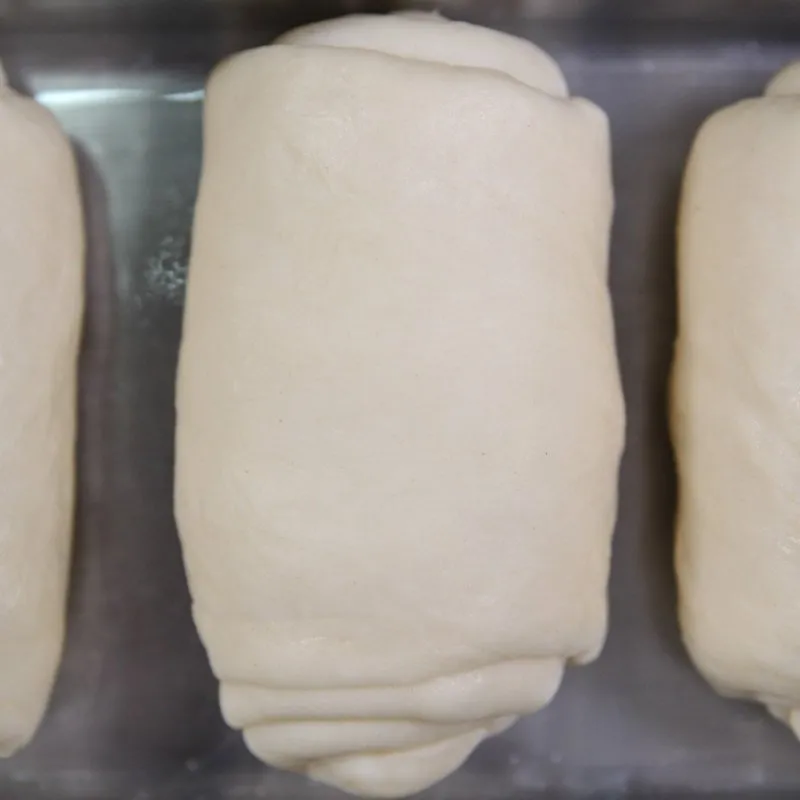
And speaking of egg proteins, due to the absence of them… the color is also impacted. It knows the gold of bread, it is the famous reaction of Maillard that uses amino acids (the small parts that together form proteins) and sugars. The difference is more visual and aesthetic.
That said all this: can you see the differences in taste of bread? – No and yes. You will only notice some difference who has the comparison parameter, that is, have eaten several times the original version (not vegan) or eat the two versions side by side. Then I would say I would notice something.
I have tested some changes to reduce these differences in the palate (which are small): either by putting more water and oil. As I said before, just adding more water does not work so well because it influences the flour (if it has less protein), and oil can even put more… however, I thought it is more greasy than necessary.
In short: even though it is not totally the same, it remains an incredible bread. So much so that I did the vegan version more often than the original.
Golden of the Bread
As I said before, the vegan mass does not get so golden after that it assa: because of egg (can not brush, right also).
I tested it with vegetable drink that was made with vegetable proteins in the composition (of peas), and it was gilded similar to homemade bread, you know? But buy just for that, I don’t know it’s so much worth it… you decide.
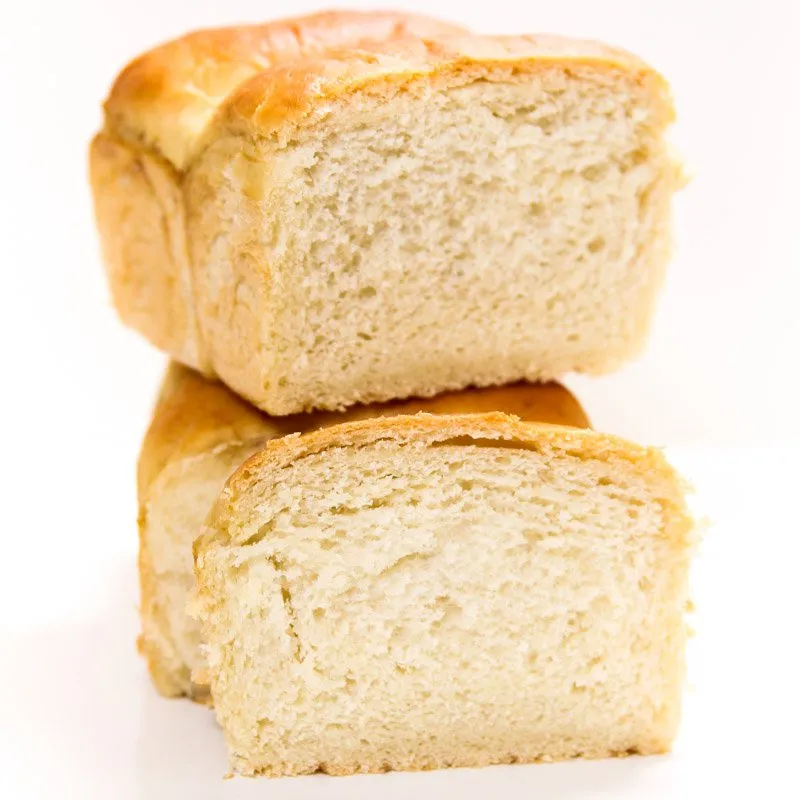
What I found easier to do the finish was: sugarcane melack. It’s also not super cheap, but I feel it’s more affordable. And because it is already colored, it helps even more in color. Another option would be dissolved mascavo sugar… but I didn’t like it so much. Normal sugar is not so cool.
It is versatile, versatile, pasta
By title, you saw that you have two options with the same mass. You can make the bread “salted” (homely bread style) or sweet. For the text it was apple filling, but it could have been cinnamon roll style cinnamon or guava or coconut. Or the stuff you want!
Traditional Super Soft Bread with Apple (Vegano)
Pre-preparalloir: 20 minutesminutos
Preparing Time: 45 minutesminutos
Rest: 2 hourshoras
Total: 3 hours horas5 minutes minutes
It yields: 14 slices (1 bread of 30x9cm)
Filling of Apple
- 750 g apple (gala or fuji; about 4 units)
- 100 g crystal sugar
- 1 teaspoon cinnamon powder (to taste)
- 0.5 g grated nutmeg on time (optional)
- 10 mL vanilla essence (transparent or common, optional)
- 5 g starch of corn
Tangzhong / Yukoke
- 200 g water (BP: 50%)
- 40 g wheat flour (BP: 10%)
The Mass of Bread
- 65 g water (frozen; BP: 16.25%)
- 75 g vegetable oil (BP: 18.75%)
- 40 g crystal sugar (BP: 10%)
- 6 g refined salt (BP: 1.5%)
- 360 g wheat flour (BP: 90%)
- 6 g instant dry organic yeast (BP: 1.5% (see observation))
Finishing
- 10 g melated cane (for brush, optional)
- 20 mL water (for brushing, optional)
Use the quantities inunits of measurements by weight and volumewhen you are present. The measures incups / harvestersare just onecourtesy of the systemand e e less precise. . .
1 cup: 250mL | 1 tablespoon: 15mL.
Filling of Apple
- Wash and peel the apples. I wanted to do without the shell, I think it’s better. Chop in small pieces, removing the seeds. In the end, you should have about 590g of peeled apples and chopped.
- Cook the apples with sugar and cinnamon in a high frying pan over medium heat always stirring. The cooking time can vary, it is to remove moisture from apples, about 6-8 minutes.
- The amount of sugar tends not to be as sweet as bread filling, but if you want sweeter add about 50g more sugar.
- The amount of cinnamon is to your liking too, start by placing 1 teaspoon of cinnamon and adjustment. And if you want you can put other spices also like ginger and blackhead powder.
- Add the vanilla and cornstarch, cook for another 1-2 minutes.
- Remove from the fire and let cool down. The stage of the cooked apple is only necessary if you are making the stuffed version.
Tangzhong / Yukoke
- Mix the water and wheat flour by stirring well in a microwave bowl.
- Cook the flour mixture in the microwave every 30 seconds and always stirring the times. It usually takes 2 minutes and 30 seconds. It can be made in a pan over medium heat until it turns a viscous paste, about 3-4 minutes, stirring always.
- The mixture must reach at least 65o C and have the appearance of porridge.
- Download it to a bowl that will be made the bread.
The Mass of Bread
- Add water, oil, sugar and salt in the same bowl as the flour paste (Tangzhong / Yukoke) and mix with a wire beater (fouet) until it is semi-uniform. It is more to lower the temperature of flour paste.
- Add the rest of the wheat flour, organic yeast and sove the dough for about 12-14 minutes if you do it in hand or for 6-8 minutes in the mixer with the batter hook. The dough is super soft even, while blowing it slightly firmer. (Although it is possible to do in hand, it takes more work, the mass is even soft)
- Let it rest for 30 minutes at room temperature (about 25-30oC) covered with a damp cloth, will grow, but without folding in size.
- Transfer the dough into a container greased with oil that has lid, spray water on the dough, cover and take to the refrigerator for at least 45 minutes, the dough should get cold. The cold dough makes it easy to model the final shape. If you want, you can leave the dough overnight in the refrigerator, and finish the next day.
- Open the still cold dough with a roll forming a uniform disk (35-40cm), sprinkle flour both in the pasta and on the surface so as not to stick. Turn the disc to leave the smoother side down and remove excess flour.
- Fold the vertical sides of the disc to the center forming a rectangle, knead with your hands to give a more uniform shape (can be done with a roller).
- Wrap the rectangle from the smaller side, forming a roll. Let it sit for 20 minutes. After this step you can choose whether you want the traditional bread or stuffed with apple.
To make the stuffed bread
- Unteting with oil a rectangular shape of 28x11x6cm (length x width), reserve.
- If your area of work is small, that is, you can not open the pasta very long at once: divide the dough into two equal parts, as I did in the video.
- Open the first piece of dough in a rectangle of 40x20cm, it is slightly thinner than usual.
- Spread half of the apple cooked all over the surface of the tight dough, wrap the dough down the smaller side in a roll. Reserve. If you want, you can sprinkle more cinnamon and sugar on the apples before rolling.
- Repeat the process of opening and spreading the apple on the second piece of apple.
- Junk the first roll on the open piece of dough and continue to roll to form a single roll.
- Squeight the end of the dough to form the scar to seal the dough, and lightly knead the whole roller.
- Cut the roll in half in the direction of length forming two strips, use a sharp knife or mass rasper.
- Trat the two strips of pasta, you’ll get away with the stuffing a little.
- Transfer to prepared form and leave to brew for 1 hour or even double in size. If it is cold, the fermentation time is longer.
- Preheat the oven to 180oC when you are half the rest time of the bread.
- You can also brush the mixture of mela and water over the bread if you want a more golden finish, without the brushing the bread will become clearer by no egg in the dough.
- Ase at 180oC for about 45 minutes or until golden, and the internal temperature of the bread is greater than 87oC. If you want it to be even more golden, brush the mix of melated two more times in the final 15 minutes of cooking time, waiting 5 minutes between each time.
- Remove bread from the oven, wait 10 minutes and untrained. Let it cool on a grid before eating, it needs to cool down.
- Because it is a stuffed bread, I recommend that after cold it is stored in the refrigerator to last longer.
To make the traditional bread
- Untese a rectangular shape with about 28x11x6cm with oil. Reserve.
- Separate the dough in 4 parts, I recommend that the dough be heavy. Generally, the total mass has around 800g. So every piece has about 200g.
- Open each piece of dough with a roll forming a uniform disk, sprinkle flour on both the dough and the non-sticking paw surface. Turn the disc to leave the smoother side down and remove excess flour.
- Fold the vertical sides of the disc to the center forming a rectangle and with the roller open the dough to increase the rectangle. You should continue a rectangle, about 40x8cm.
- Knead the tip closest to the rectangle of you, then wrap the rectangle starting with the untapped tip. Forming a uniform roll, repeat the process with the rest of the dough.
- Place the rolls inside the greased shape, leaving a little space among them.
- Let it rest for 1 hour or until folding in size. If the day is colder, leave for 1 hour and 30 minutes. Spray water on the surface of the bread every 25 minutes so as not to dry too much, it can cover with a damp cloth as well, but tends to stick.
- Preheat the oven to 180oC when you are half the rest time of the bread.
- Brush the mixture of melado and water on the bread if you want a more golden finish, without the brushing the bread will become clearer by no egg in the dough.
- Asse at 180oC for 35-40 minutes or until golden, and the internal temperature of the bread is greater than 87oC. If you want it to be even more golden, brush the mix of melated two more times in the final 15 minutes of cooking time, waiting 5 minutes between each time.
- Remove bread from the oven, wait 10 minutes and untrained. Let it cool on a grid before eating, it needs to cool down.
- BP : baker’s percentage, the percentage of baker as is usually written the bread recipe. The amount of the ingredient is in relation to the total amount of flour. I put it for anyone who wants to know.
- Flour: bread is easier to work with flours with higher total protein content. I suggest: Arapongas (14%) and Venturelli (12%), Anaconda (10%). If using flour with 12-14% it may be necessary to add another 15g of water in the dough. In flour with 10% I do not recommend.
- Dry Organic Injury: I suggest you use Fleischmann yeast instead of Dr. Oetker who has a more active fermentation and makes the dough softer, therefore, more difficult to work. But if the day is cold (below 20 degrees Celsius) or will leave the dough for longer in the refrigerator use Dr. Oetker, in the tests, I thought the behavior and result were better.
The recipe has links to affiliate program, if bought, PratoFundo can receive a commission on the sale that helps keep the site on the air.
Nutritional info is only courtesy of the system and generated automatically; they may not reflect the nutritional reality of the recipe.
KEY WORD: vegan confectionery, tangzhong method, bread shape
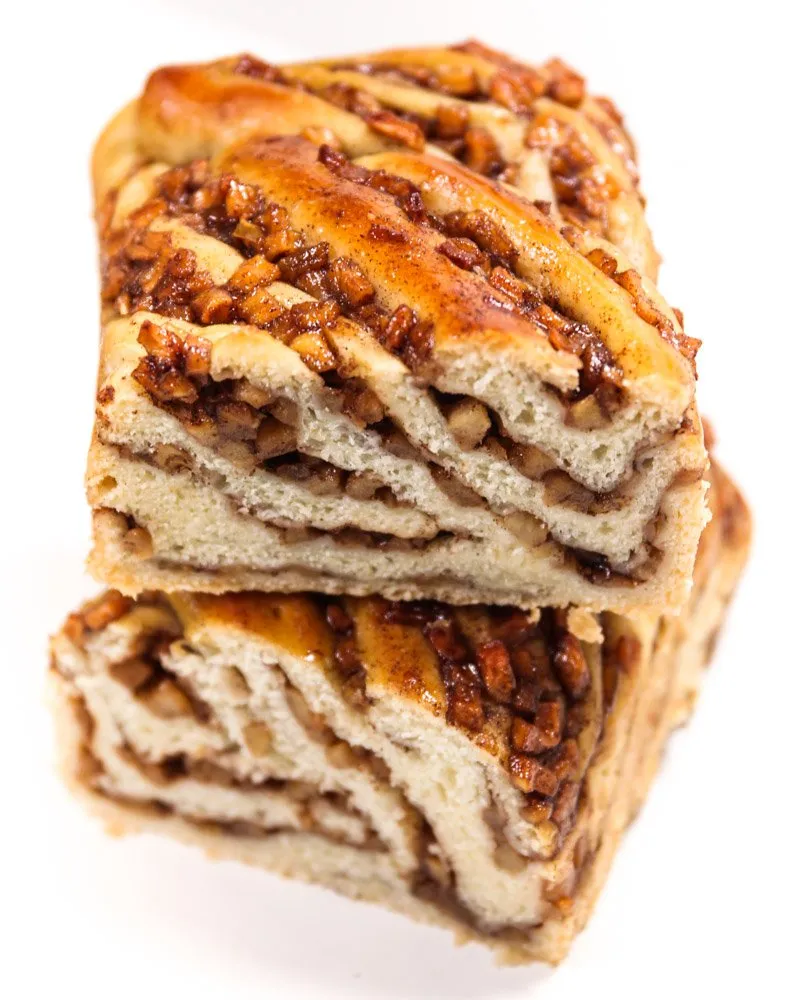

Sign up for our newsletter and stay up to date with exclusive news
that can transform your routine!
Warning: Undefined array key "title" in /home/storelat/public_html/wp-content/plugins/link-whisper-premium/templates/frontend/related-posts.php on line 12
Warning: Undefined array key "title_tag" in /home/storelat/public_html/wp-content/plugins/link-whisper-premium/templates/frontend/related-posts.php on line 13

